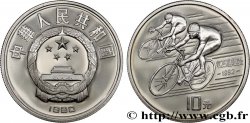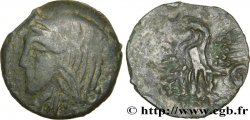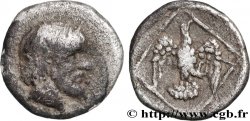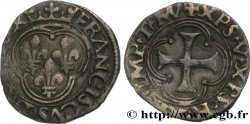fme_637121 - CHINA Médaille de mariage, Grande amulette
Not available.
Item sold on our e-shop (2020)
Price : 700.00 €
Item sold on our e-shop (2020)
Price : 700.00 €
Type : Médaille de mariage, Grande amulette
Date: (fin XXe siècle)
Metal : bronze
Diameter : 148 mm
Orientation dies : 12 h.
Weight : 470,44 g.
Edge : lisse
Puncheon : sans poinçon
Coments on the condition:
Patine hétérogène avec des taches noires et des traces de vernis un peu collant. Marques d’usure sur certains reliefs
Catalogue references :
Predigree :
Cet exemplaire provient de la Collection Terisse
Obverse
Obverse legend : (LÉGENDE EN SINOGRAMME CHINOIS) WU XING DA BU.
Obverse translation : Grande monnaie des cinq éléments.
Reverse
Reverse legend : ANÉPIGRAPHE.
Reverse description : Dragon, Phénix et Perle flamboyante (symbolisant l’harmonie du couple Homme et Femme et la richesse spirituelle).
Commentary
D’après l’ouvrage, Amulette de Chine et du Viet-nam par François Thierry, “les pièces portant l’image de ces deux animaux fantastiques (dragon et phénix) étaient offertes lors des mariages en voeux de bonheur et d’harmonie et portent le nom générique “longfeng qian” soit pièces du dragon et du phénix”.
NB. «La théorie des cinq éléments est l’une des bases de la poésie chinoise ; très en vogue sous les Han, elle structure l’ensemble des phénomènes naturels, physiques, sociaux, intellectuels selon cinq catégories qui se succèdent dans un cycle comprenant une montée, un apogée et une décadence. Ces catégories s’appuient sur cinq éléments, qui se succèdent en s’annihilant.».
According to the book, Amulet of China and Vietnam by François Thierry, “coins bearing the image of these two fantastic animals (dragon and phoenix) were offered at weddings as a wish for happiness and harmony and bear the generic name “longfeng qian” or coins of the dragon and the phoenix”. NB. “The theory of the five elements is one of the bases of Chinese poetry; very fashionable under the Han, it structures all natural, physical, social, and intellectual phenomena according to five categories which follow one another in a cycle comprising a rise, a peak, and a decline. These categories are based on five elements, which follow one another while annihilating each other.”
NB. «La théorie des cinq éléments est l’une des bases de la poésie chinoise ; très en vogue sous les Han, elle structure l’ensemble des phénomènes naturels, physiques, sociaux, intellectuels selon cinq catégories qui se succèdent dans un cycle comprenant une montée, un apogée et une décadence. Ces catégories s’appuient sur cinq éléments, qui se succèdent en s’annihilant.».
According to the book, Amulet of China and Vietnam by François Thierry, “coins bearing the image of these two fantastic animals (dragon and phoenix) were offered at weddings as a wish for happiness and harmony and bear the generic name “longfeng qian” or coins of the dragon and the phoenix”. NB. “The theory of the five elements is one of the bases of Chinese poetry; very fashionable under the Han, it structures all natural, physical, social, and intellectual phenomena according to five categories which follow one another in a cycle comprising a rise, a peak, and a decline. These categories are based on five elements, which follow one another while annihilating each other.”








 Report a mistake
Report a mistake Print the page
Print the page Share my selection
Share my selection Ask a question
Ask a question Consign / sell
Consign / sell
 Full data
Full data















